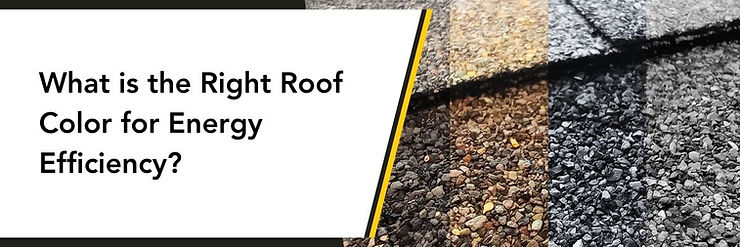

If you are considering how to choose a roof color for an upcoming project, take a closer look at energy efficiency. More than just curb appeal, the color of your roof can also influence temperature, energy consumption and the lifespan of your roof materials. roof color can impact your home’s energy efficiency. Let’s explore how different roof colors affect energy efficiency and what considerations to keep in mind when selecting the best hue for your home.

Roof color plays a pivotal role in determining how much heat your home absorbs or reflects. Light-colored roofs, such as whites, beiges, and light grays, reflect a substantial portion of sunlight, reducing heat absorption. This reflective property helps keep your home cooler during hot months, potentially lowering air conditioning costs. In contrast, dark-colored roofs absorb more heat, which can increase indoor temperatures and lead to higher energy expenses for cooling.
The U.S. Department of Energy highlights the concept of “cool roofs,” which are designed to reflect more sunlight and absorb less heat than standard roofing materials. By reflecting solar energy, cool roofs can lower roof surface temperatures, decreasing the amount of heat transferred into the building. This not only enhances indoor comfort but also reduces overall energy usage.
Your local climate plays a significant role in determining the most energy-efficient roof color for your home. In warmer regions, light-colored roofs are generally more beneficial as they reflect heat, helping to keep indoor spaces cooler. Conversely, in cooler climates, dark-colored roofs can be advantageous by absorbing heat, which may reduce heating costs during colder months. However, it’s essential to balance these benefits with potential summer cooling needs.

While color is crucial, the roofing material also influences energy efficiency. Materials like metal and certain types of tiles (while we do install metal roofs, we do not not install tile unfortunately) can be coated or treated to enhance their reflective properties, regardless of color. For example, a dark-colored metal roof with a reflective coating may perform better in terms of energy efficiency than a light-colored asphalt shingle roof. Therefore, it’s essential to consider both the material and color in tandem to achieve optimal energy performance.
In conclusion, the color of your roof significantly influences your home’s energy efficiency, indoor comfort, and environmental footprint. By thoughtfully selecting a roof color that aligns with your local climate and utilizing appropriate materials, you can enhance your home’s performance and contribute to a more sustainable future.



